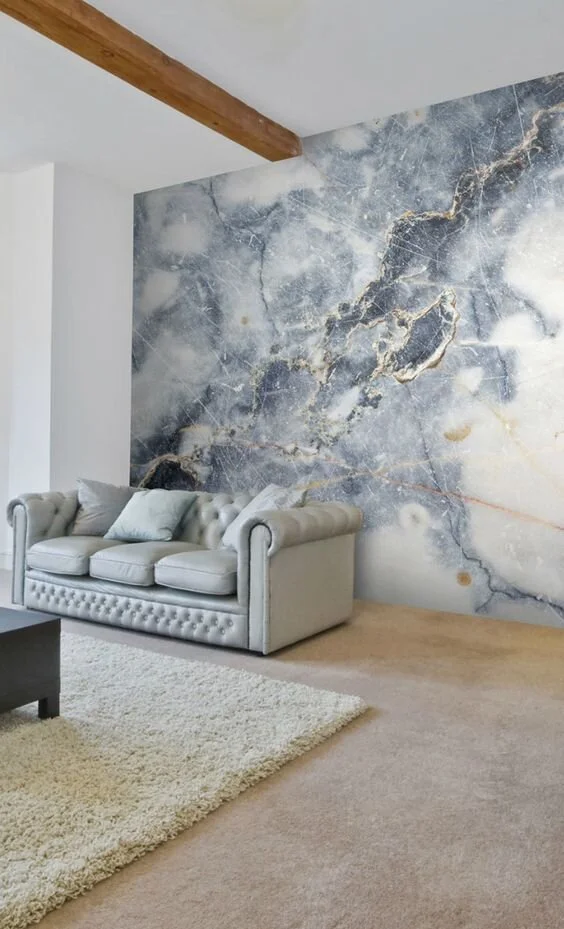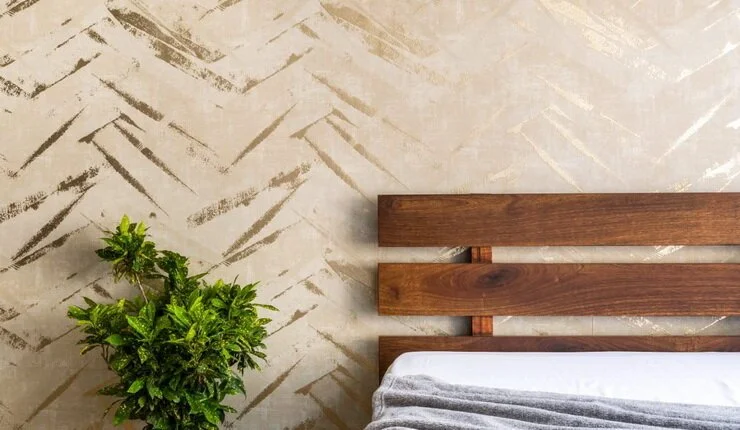Artificial Marble vs. Natural Marble: How to Choose Between Real and Fake Marble?
December 2, 2020Marble is the epitome of elegance and the savviest choice of home décor for many. However, most homebuyers who plan to construct their home or remodel their existing one with marble are quite often confused about which stone to choose, viz. natural marble or artificial marble, also known as fake marble.
If you are perplexed between natural and artificial marble or fake marble, fret not, we have compiled below some useful tips that will help you make the right choice between the two types.
The Difference between Natural Marble and Artificial Marble (Fake Marble): How to Choose?
Natural marble stone is a metamorphic rock- the one that is quarried from the earth, and its colour type and texture vary according to the location from which it is quarried. Natural stone is thus unique in nature with respect to the colour and veins, in addition to the natural imperfections that are unique to each stone. Natural marble does not have a polished look.
Artificial stone, on the other hand, is human-made and came into the market during the 1980s. Artificial marbles are a combination of marble debris, stone powder, plastic cement, sand, and a few other items, along with acrylic glue mixed in a predetermined proportion. Hence, artificial marble stones have a uniform look, come in various colours, and look more polished as they are artificially coloured and polished.
Now, let’s find out how to choose between natural and artificial marble. For this we must know how natural and artificial marble differs in their capacities and how they can be used in construction:
How Natural and Artificial Marble Differ in their Capacities
1. Variety of Colours:
Natural marble has limited colours as its shades depend on the impurities that are present in the limestone. Artificial marble, on the other hand, has versatile colours and patterns leading to a more diverse selection range for homeowners. The colours are artificially added and hence they lack the natural sheen texture and grain of natural marble.
2. Maintenance:
Natural marble has a high maintenance cost. Though natural marble is hard, it is actually quite brittle as it can become chipped or discoloured in a very short span of time. Also, one must be careful not to spill any oil, or cleaning substances, or anything acidic as it can damage the stone. Experts also suggest resealing natural marble once every six months.
Artificial marble is quite resistant to all the above spillage as they are non-porous. They hence require less maintenance and upkeep.
3. Uniqueness:
Each natural marble being quarried from earth has a unique texture and colour. It is hard to find two similar pairs of marbles. This makes them more sought after. Artificial marble is more homogenous and one can get a plethora of similar shades for uniform implementation.
4. Weight:
Natural marble is quite heavy as opposed to artificial marble which is lighter thereby enabling ease of transport. Artificial marble hence can result in much cost savings as transportation is much simpler.
5. Heat Sensitivity:
Natural marble being carved out of earth undergoes immense heat and pressure, and hence they are more heat resistant. Artificial marble is an amalgamation of various elements glued together, and hence they are fragile (they can burn or melt) when they come into contact with high temperatures.
6. Cost:
Natural marble is quite expensive as it is a high–end natural stone and requires great effort in cutting, shaping, and quarrying. Artificial marble can be created with fewer ingredients and moulded; hence they are comparatively less expensive.
7. Installing Techniques:
The installation of a natural marble stone requires a skilled workforce. Any mishandling during installation can lead to the marble getting cracked, discoloured, or the veins popping out. Hence, strong muscle power is required for installation. Artificial marble can be more easily installed as they are less fragile. The cutting and adjusting of marble can also be done on the site itself.
8. Construction Ease:
Construction with artificial marble is much easier compared to natural stone. This is because artificial marble can be bent easily and cut and shaped on-site.
How to Choose between the Two Application-wise:
Artificial stone can be applied to countertops, cupboard tops in the kitchen, dining table surfaces, and furniture. Natural stone may not be best suited for the above items as it does not allow a way for bending.
Artificial stone being lighter and thinner, is more resistant to corrosion and stains. It has a glossy effect and hence can be applied to walls and floors as well.
Marble on the other hand does look grand on floors, however, it must be maintained properly sans any spillage of oil or acids. Hence it must be sealed properly and maintained every six months. Ensure you order the marble from the same batch when using it for flooring.
Marble Walls are also quite captivating. One can also opt for a marble accent wall or backsplash instead of using stone for all walls. In this way, maintenance will be easier.
Other common areas where marble can be used are pillars or marble furniture (like marble coffee tables, cutting boards, night lamps, etc.) In this way, maintenance will be easier.
When it comes to outdoor areas (like gardens for instance) that are exposed to moisture and areas where footfall is high, artificial marble is the best option. Also in areas like bathrooms or kitchens where there is a chance of water spillage, artificial marbles are best suited.
How to Distinguish Between Natural and Artificial Marble
Natural marble has a more subtle colour, and at times the limestone layers integrated with other natural minerals can produce greenish, creamy, bluish, or grey shades. More powerful colours, dark orange or turquoise, means that the marble is artificial, also known as fake marble.
If the marble surface shows scratches or wear and tear, then you are looking at natural marble. If the slab's underneath side shows a clean slate or little or no damage (you can use a razor to test), it is artificial marble or fake marble.
Artificial marble is glossier compared to natural marble, which doesn't have the sheen. However, it's worth noting that with the latest technology advancements, fake marble can mimic natural marble's appearance more closely than ever before.
Marble is no wonder a timeless piece of beauty, and their gorgeous look is enough to enhance the grandeur of any home. While natural marble is a treasure, artificial marble or fake marble is just as great and more affordable. Many homebuyers are increasingly looking at incorporating marble into their homes. Connect with our experts to get essential tips and excellent guidance on choosing between natural and artificial (fake) marble for your home décor.




